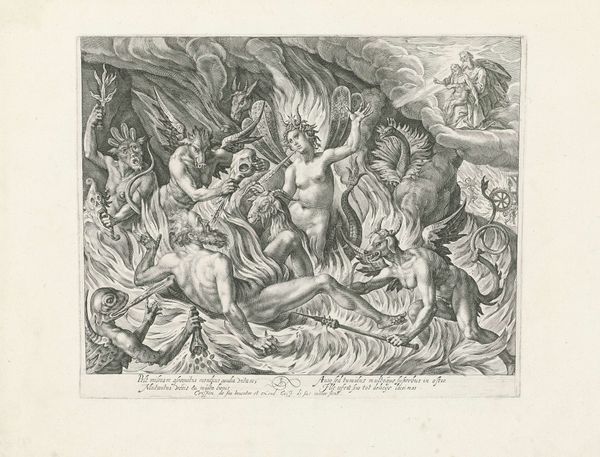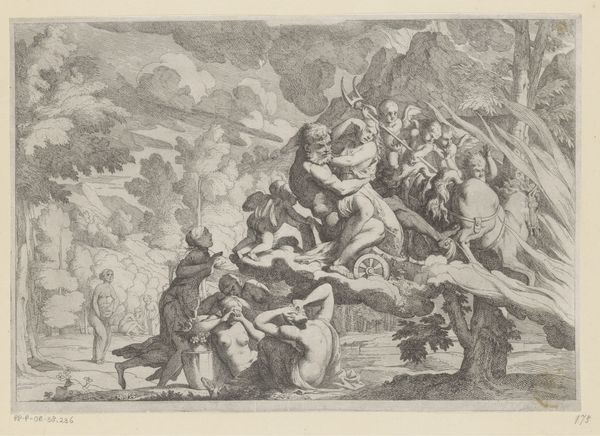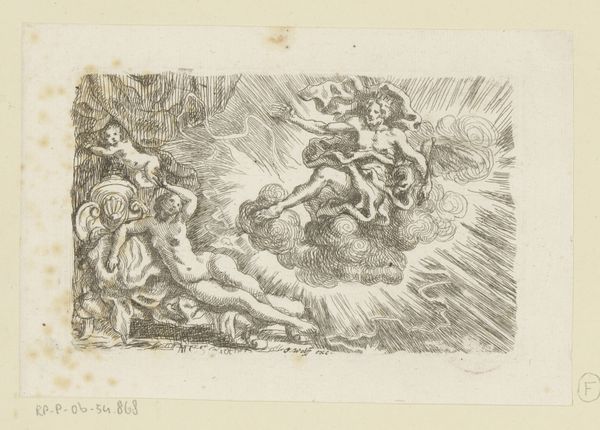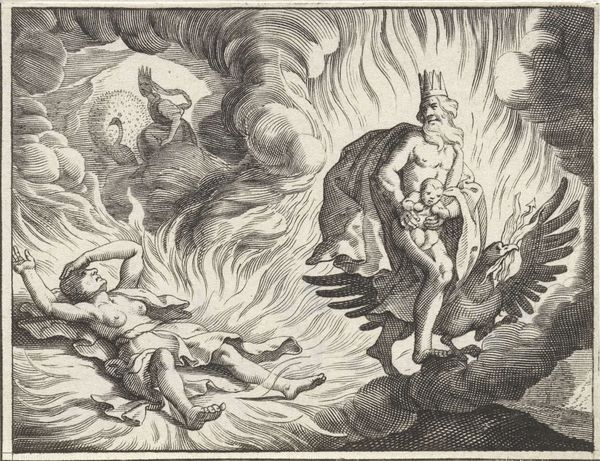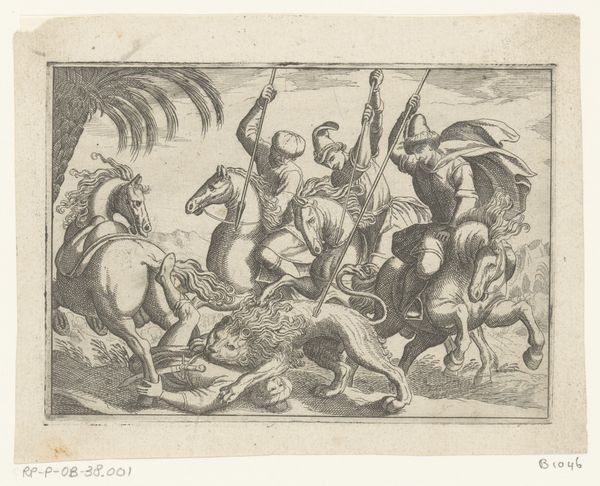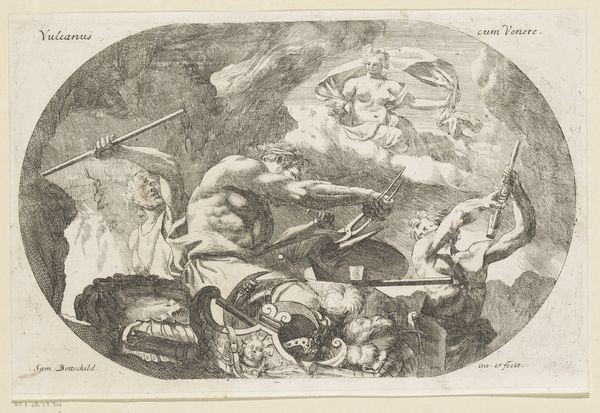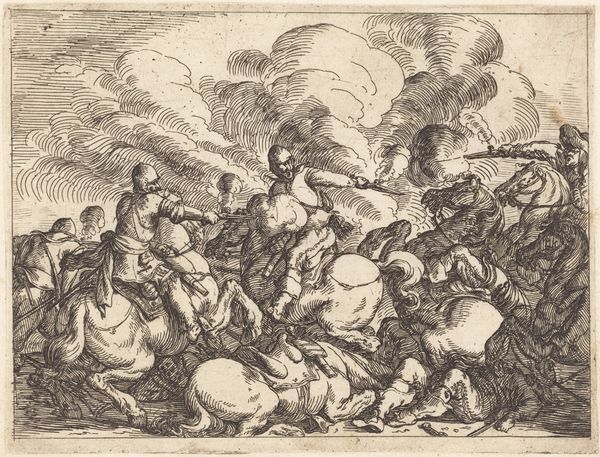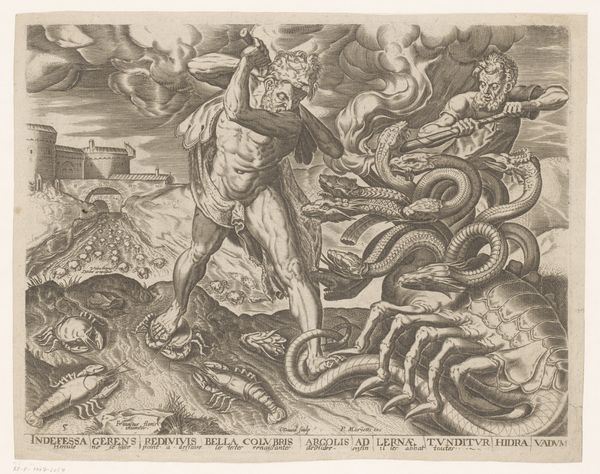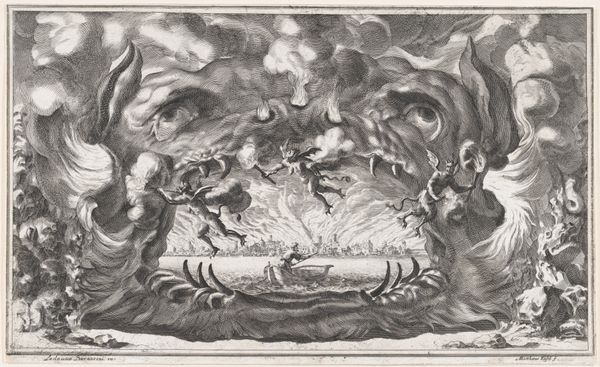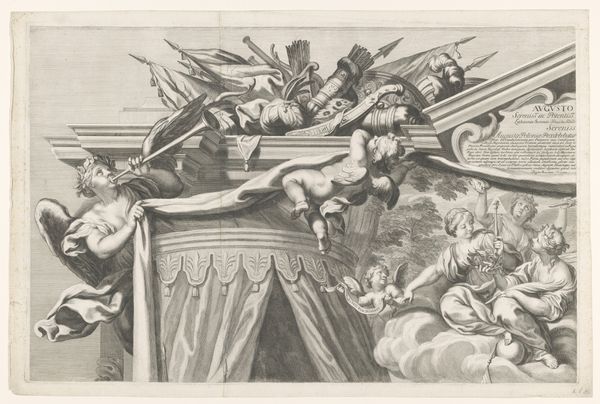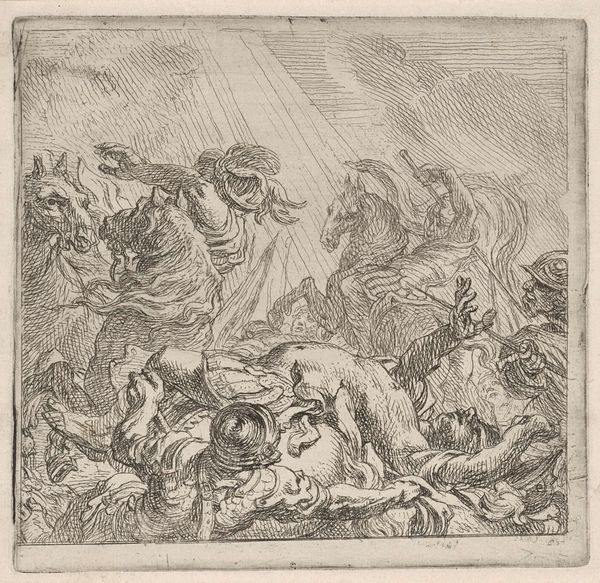
Dimensions: height 95 mm, width 139 mm
Copyright: Rijks Museum: Open Domain
Curator: Isabella Piccini's engraving, "Redding van een ziel uit het vagevuur," or "Saving a Soul from Purgatory," likely executed between 1654 and 1734, is striking in its depiction of suffering and salvation. What captures your attention most in this piece? Editor: The first thing that hits me is the intensity of the fire rendered through these tightly packed engraved lines. It makes me wonder, how did Piccini even begin to conceptualize, and then physically create, such a fiery scene using metal and ink? Curator: Precisely! The material conditions are crucial here. Engraving, as a process, inherently involves labor – the artist’s hand meticulously carving lines into a metal plate. Think about the socio-economic context: prints like these were often commissioned and reproduced, acting as a means of disseminating religious ideology to a wider audience, almost a form of propaganda. How do you think the choice of engraving as a medium affects the message? Editor: Well, the printmaking process allows for reproducibility. So this scene of salvation can be endlessly reproduced. That brings into question who the image was intended to reach, and why that matters in its interpretation. The accessibility seems significant... Curator: Absolutely. The relatively low cost of prints, compared to paintings, meant these images circulated among a different class of consumers. Did that democratisation influence her choice of subject or how she conveyed it? What message did these readily-made versions carry? What's being consumed here? Editor: That's a really interesting way of looking at it! It changes my perspective, makes me consider not just the religious narrative, but the broader cultural exchange at play and how Piccini herself fits into it as both artist and craftsperson. I always considered engraving a 'high' art but thinking about its mass consumption like this complicates things... Curator: Exactly! This piece reminds us that "high" and "low" art are constructs, shaped by the material conditions of their production and consumption. Looking at art this way allows us to think about the labor, resources, and social forces intertwined in a piece's creation.
Comments
No comments
Be the first to comment and join the conversation on the ultimate creative platform.
